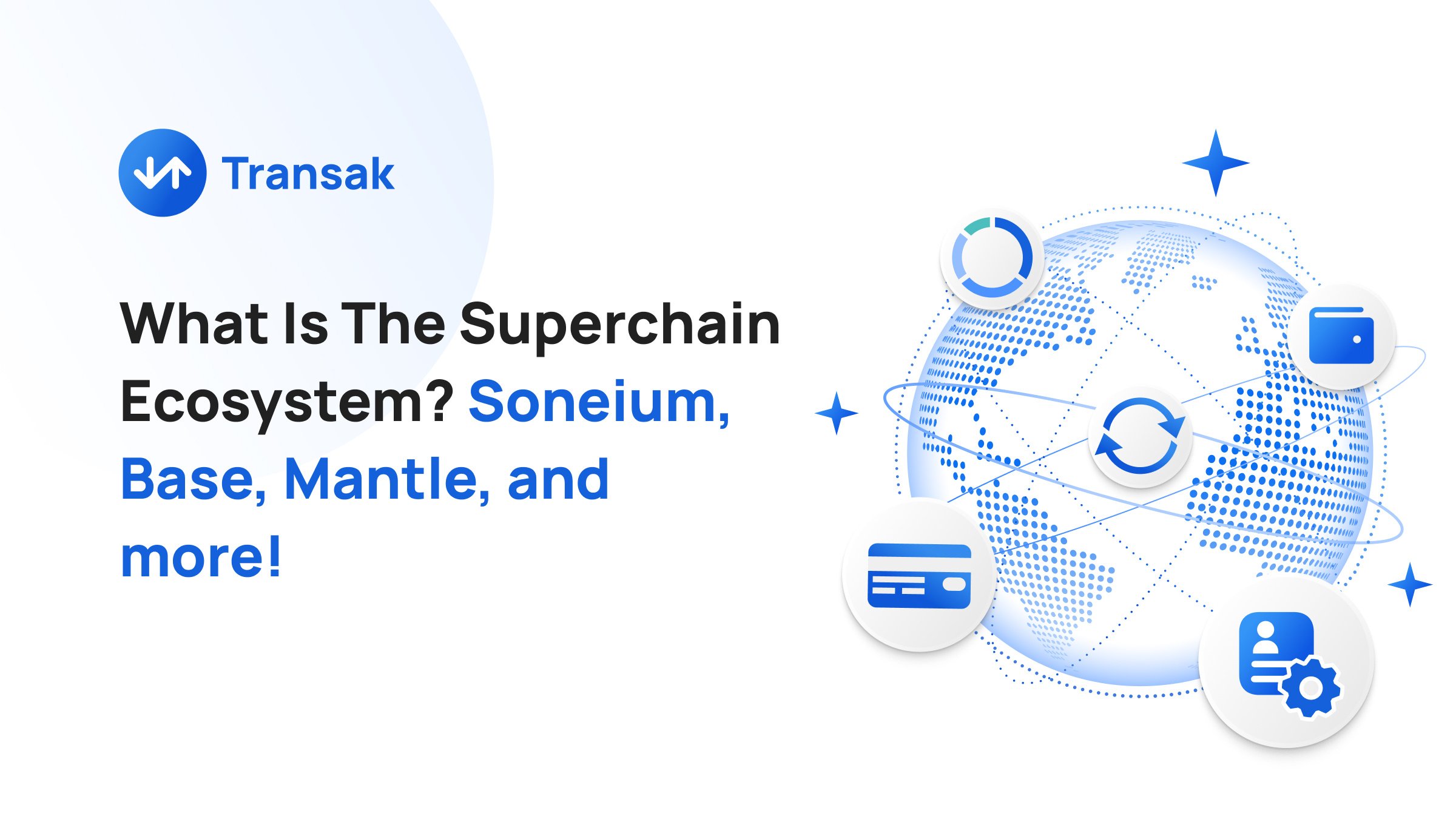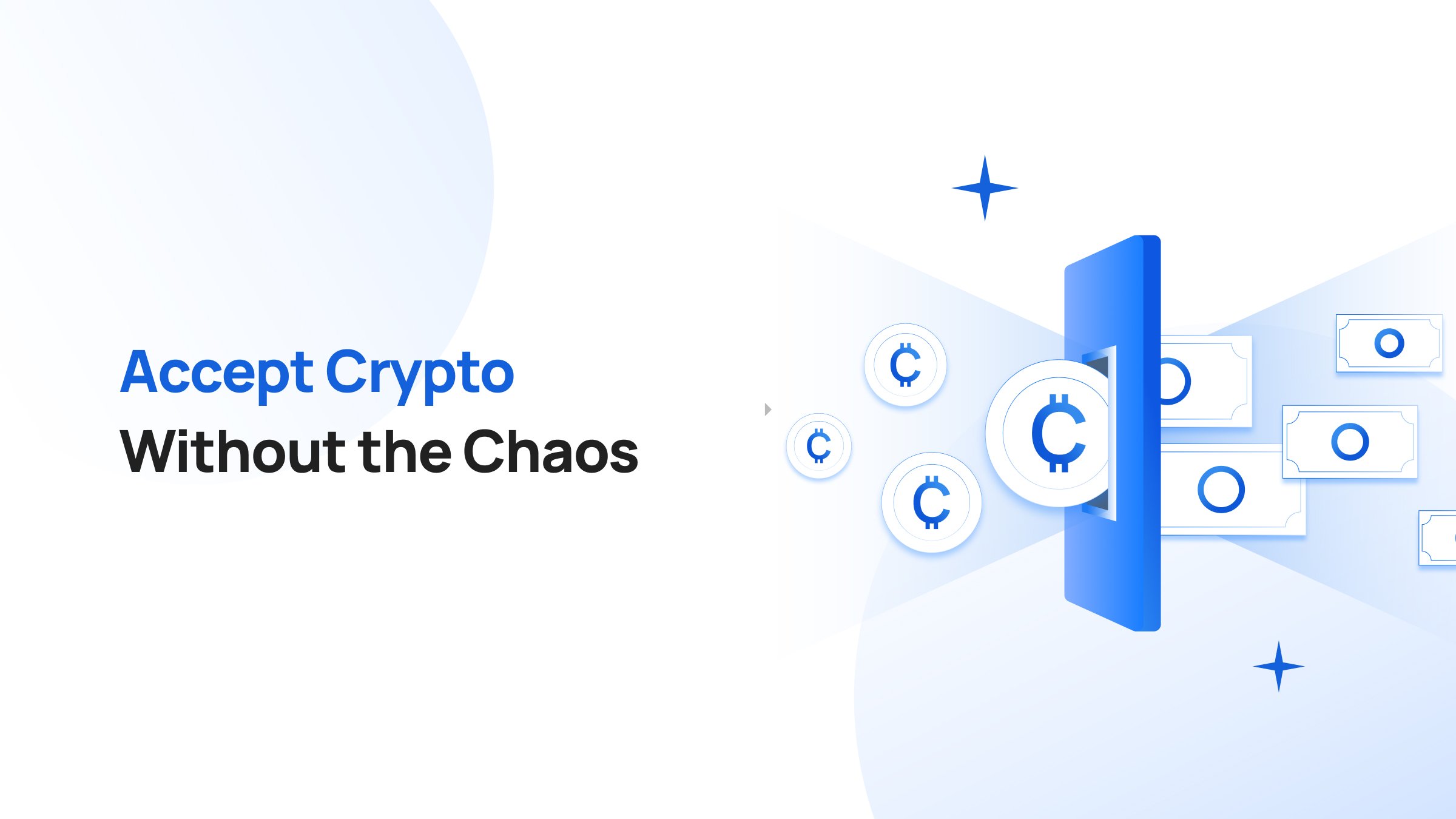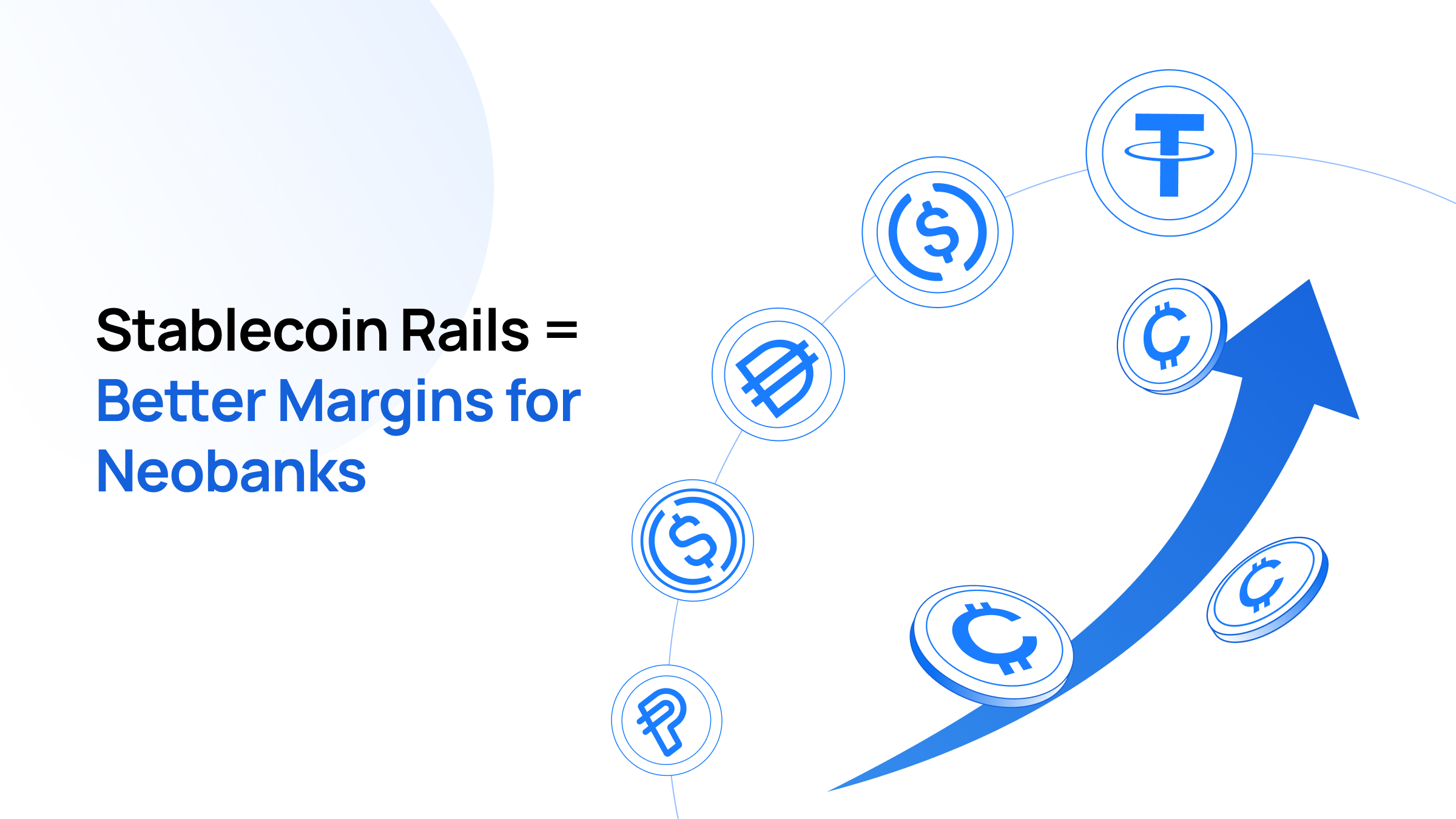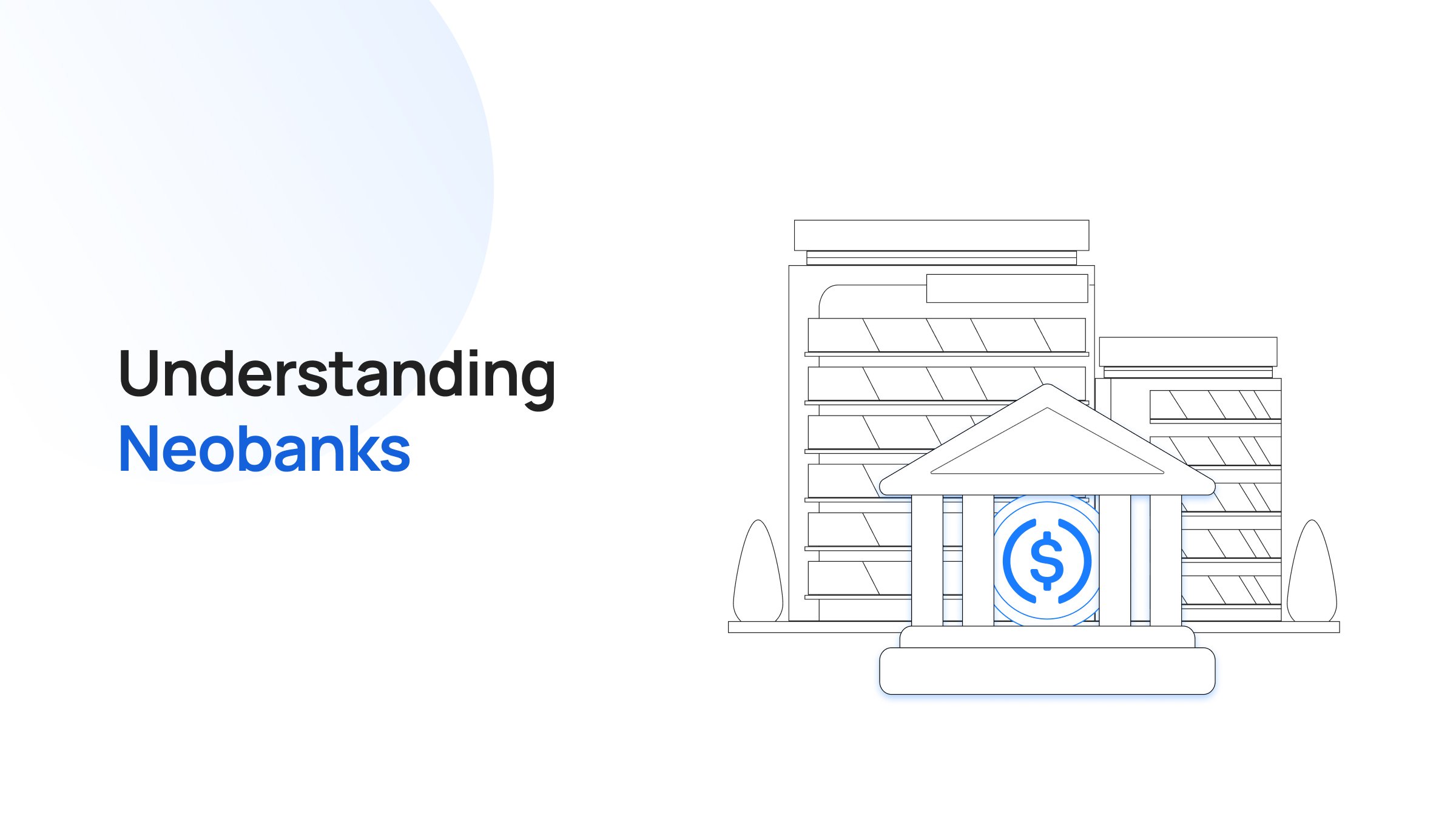.jpg)
Superchain ecosystem is one of the most scalable and secure Ethereum layer 2 networks built on Optimism's developer-friendly framework, OP Stack.
The Optimism Superchain ecosystem has completed over 1.9 billion transactions since its introduction with more than $2.8 TVL locked in all its protocols combined. As of September 2024, projects like Base and Optimism constitute greater than 80% of the TVL in the ecosystem.
This ecosystem represents a significant step forward in the evolution of blockchain technology, offering a more scalable, secure, and user-friendly platform for building and running decentralized applications (dApps).
In this article, we’ll get to know more about Optimism Superchain, its properties, the Superchain ecosystem, major individual chains on the ecosystem, and more.
Understanding Optimism Superchain
The Optimism Superchain is a network of interconnected Layer 2 blockchain networks built using the open-source OP Stack developed by Optimism. It aims to provide enhanced scalability, interoperability, and flexibility for decentralized application development on Ethereum.
“Superchain” is a term coined by Optimism, a leading layer 2 (L2) scaling solution for Ethereum, to describe an interconnected network of L2 blockchains that can communicate and share liquidity seamlessly.
Understanding a superchain requires familiarity with its key components:
- OP Chains
- OP Stack
OP Chains
OP Chains are individual blockchain networks built using the OP Stack and seamlessly interconnected within the Superchain. They share the same open-source development stack — OP Stack.
These chains also leverage the same communication layer for interacting with each other, ensuring seamless connectivity, cross-chain coordination, and shared security. This standardized infrastructure enables developers to build apps on these OP Chains that scale effortlessly to cater to the Superchain ecosystem's growing demands and interoperability requirements.
OP Stack
Developed by Optimism, OP Stack is a standard open-source development framework that provides a set of software components to build and customize scalable solutions for Ethereum layer 2 blockchains. The availability of this user-friendly framework and platform allows developers to create faster, cheaper, and more efficient applications on the Ethereum network.
OP Stack implements an optimistic rollup to reduce the transaction load from the Ethereum mainnet, thereby resulting in an increased transaction speed and enabling users with low transaction fees. Most importantly, the applications built using the OP stack also inherit the strong security of the Ethereum mainnet.
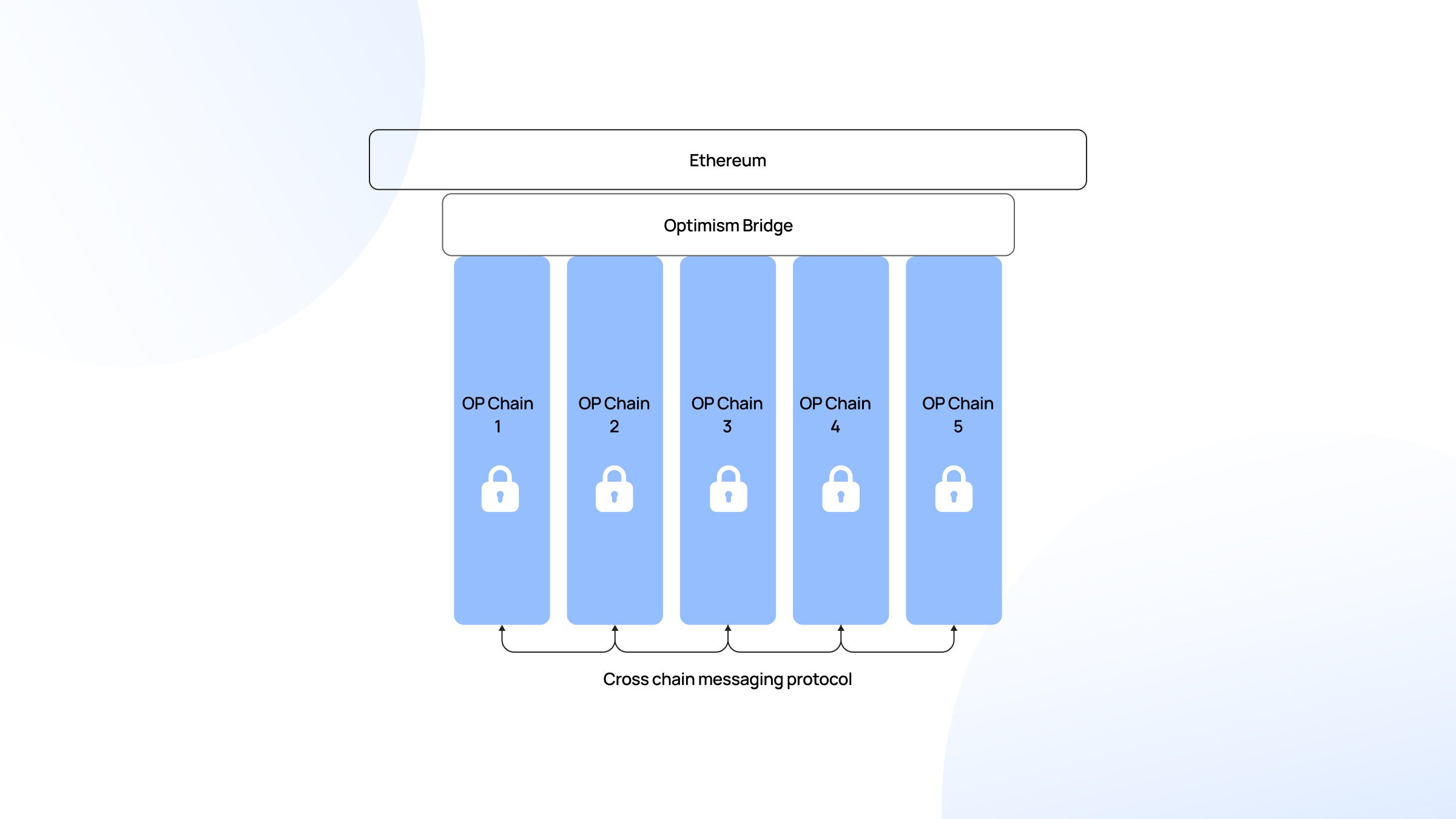
OP Chain provides an interconnected network of L2 blockchains, while OP Stack offers a standardized development framework, simplifying the complexity of traditional multi-chain architectures. This combination enables developers to build decentralized applications that seamlessly interact across multiple chains, benefiting from increased transaction speed, shared security, and lower fees.
The vision of Optimism Superchain is to create an interoperable ecosystem that helps to improve Ethereum’s scalability and support innovation across various web3 sectors. This interoperability helps to bridge the gap between different blockchains, encouraging developers to build applications in areas like decentralized finance (DeFi), gaming, or NFTs, with low gas fees and increased efficiency.
Properties Of The Optimism Superchain
The recent Bedrock upgrade has helped the OP Stack improve key features such as faster deposit confirmations, reduced transaction fees, boosted node performance, and more. However, to become a Superchain, Optimism needs five major properties:
- Shared L1 blockchain
- Shared bridge for all OP chains
- Cheap OP chain deployment
- Configuration options for OP chains
- Secure transactions and cross-chain messages
The OP Chains that are present within the ecosystem must share the sam layer 1 blockchain to ensure a unified ordering of all transactions. This nature helps to share security and provides the foundation for cross-chain interoperability across all OP Chains.
The implementation of a shared bridge for all the OP chains helps to enable uniform and standardized security properties across the ecosystem. This bridge also plays a crucial part in facilitating communication and liquidity transfers between supported chains, allowing assets and messages to move safely.
Cheap OP Chain Deployment
One of the primary benefits of the Superchain is the ability to build on the OP Chains without the high fees associated with layer 1 transactions. This affordability encourages projects to build applications that can solve real-world problems and cater to a wider user base while offering a minimal gas fee structure.
Configuration Options for OP Chains
Each OP Chain within the Superchain has flexible configuration options, allowing developers to pick the most suitable and efficient sequencers, consensus mechanisms, data availability providers, and others. This tailored approach helps innovative projects build applications that specifically focus on their unique requirements without unwanted overhead or limitations.
Secure Transactions and Cross-Chain Messages
For the proper function of the Superchain, ensuring the safety and reliability of transactions and communication between OP Chains is important. Strong security measures are compulsory to avoid potential frauds or hacks to safeguard the user's assets.
Once all the aforementioned five properties are fulfilled, Optimism can be considered as an Optimism Superchain.
What Is The Superchain Ecosystem?
The Superchain Ecosystem is a network of interconnected Ethereum layer 2 blockchains built on the Optimism OP Stack. This ecosystem aims to provide a more efficient and scalable platform for decentralized applications (dApps) while maintaining the security of the Ethereum mainnet.
As of September 2024, the ecosystem constitutes over 35% of the overall layer 2 transactions. This figure was only 17% in March 2024, meaning the ecosystem’s transactions have more than doubled within 6 months, showcasing a rapid adoption and growth trend.
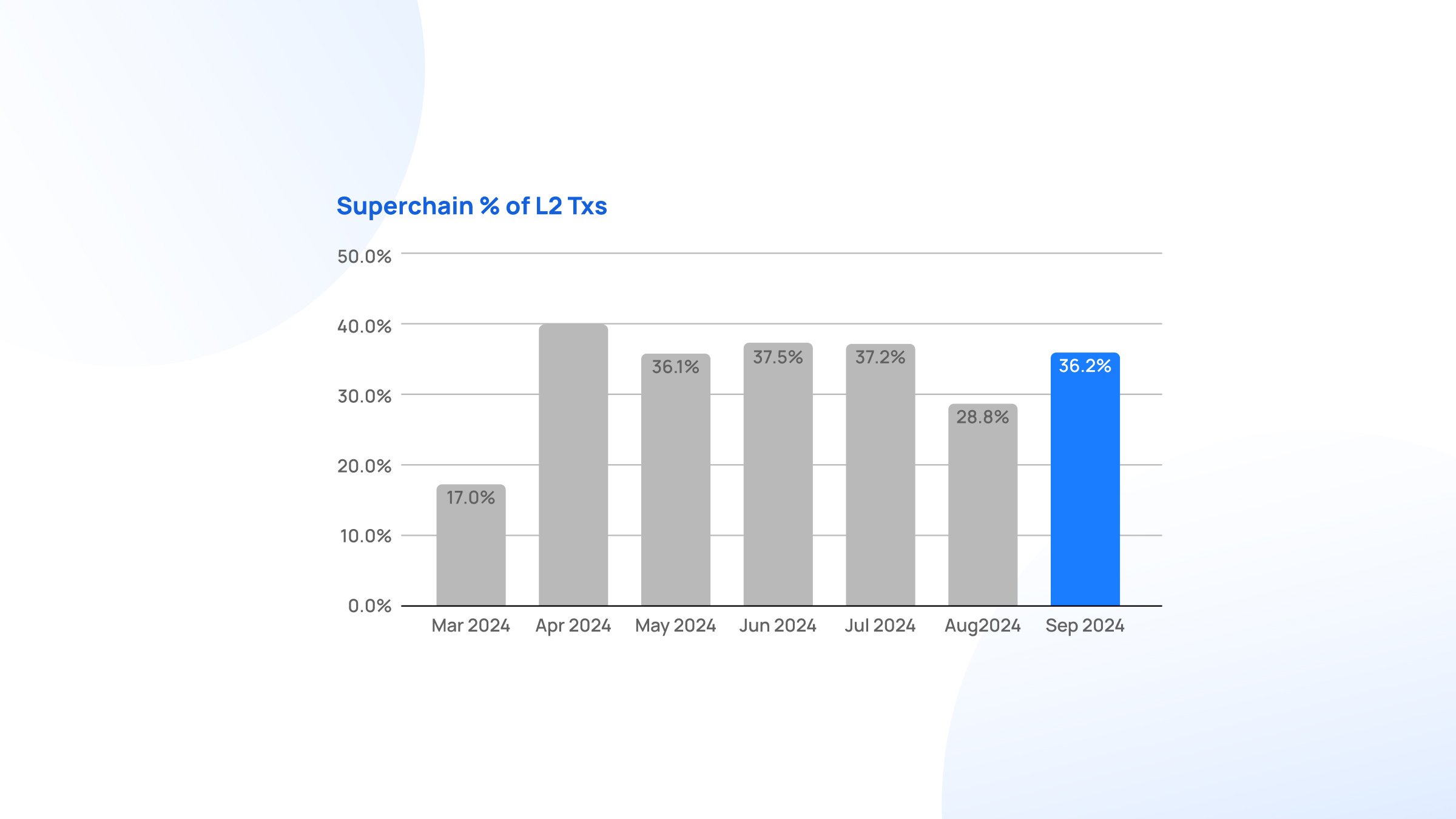
In addition, the daily transactions on the Superchain ecosystem have tripled from 1.9 million transactions in March 2024 to 6.2 million as of September 2024. During this period, the gas used per second also surged from 5.5 million to 15.8 million.
This surge in the Superchain Ecosystem's activities in recent times showcases its ability to address the growing needs of users and OP Stack developers alike. The interoperable nature of the layer 2 chains allows projects to build a diverse range of applications, ranging from gaming to finance, with seamless transactions and low fees.
.jpg)
What Is Optimism Superchain Eco?
Optimism Superchain Eco is the official platform developed to provide information and resources related to the Superchain ecosystem and OP Stack. It serves as a hub that provides free updates, events, insights, and analytics under one unified dashboard.
Essentially, Optimism Superchain Eco acts as a one-stop shop for blockchain developers and newcomers interested in participating in, learning about, or contributing to the ecosystem.
Notable Features of Optimism Superchain Eco
Ecosystem: In-Depth Chain Information
This chain’s dashboard offers details related to the network of other chains that are built using the OP Stack, along with collective revenue. Information such as the chain’s total value locked (TVL), number of projects, accounts, versions like Bedrock or OVM, and associated official links are accessible to the public.
Projects that plan to build using the OP Stack can submit a form including the project’s name, website, chain details, and other relevant information. Post submission, the Superchain Eco team reviews it, and approved ones are added to the platform.
Superchain Analytics: A Data-Driven Overview
Optimism Superchain analytics provides updated data on all chains in the ecosystem, token details, and bridging stats, to name a few. For example, the ‘Optimism Contributors Overview’ section provides the list of councils and organizations that contribute to the ecosystem.
The community members can also analyze the Optimism economics from this analytics dashboard to review the project’s revenue and profit through an informative chart.
Events: Community Interactions
Optimism Superchain ecosystem conducts both online and in-person events to strengthen the community. For instance, ‘BaseDAM’ was such an event supported by Base in August 2024 in Amsterdam to celebrate the work and progress of all developers.
OP chain projects willing to build using OP Stack can apply to list and conduct events for the ecosystem by submitting a form with the name of the event, its type, OP chain, event date and time with a cover page, registration link, and description.
Insights: Knowledge and Resources
The insights section offers informative blogs and videos, including podcasts and interviews related to the ecosystem ideal for beginners and experts alike.
Major Chains on the Superchain Ecosystem
Base
Base is an Ethereum layer 2 scaling solution developed in collaboration with Optimism using OP Stack to scale Ethereum with the faster transaction and lower gas. Coinbase, one of the largest crypto exchanges, is behind the development of this blockchain and was launched in August 2023.
This chain effectively uses a rollup mechanism and OP Stack to utilize the base security of Ethereum while summarizing the transactions off-chain to reduce the load of the mainnet. The versatile nature of Base, including EVM compatibility, allows developers to build dApps that function on various web3 sectors such as DeFi, gaming, social media, NFTs, and more.
Base has achieved a major milestone by creating its all-time high TVL of $8 billion in June 2024, around ten months after its launch. This important chain of the ecosystem has also helped to build over 125 projects with over 700 million transactions.
OP Mainnet
Previously known as Optimism, OP Mainnet is an Ethereum layer 2 scaling solution built by OP Labs using OP Stack in December 2021. It uses an optimistic rollup to bundle numerous transactions and execute offline to improve Ethereum’s scalability at a reduced cost.
Optimism Collective manages the governance of the OP Mainnet comprising two houses named ‘Citizen’s House’ and ‘Token House’ to ensure transparent and decentralized decision-making. Here, the Token House includes the OP token holders, and the Citizen House consists of members of the active community who work to vote, propose, and implement OP Mainnet’s blockchain network upgrades and decentralized governance policies.
OP Mainnet started to gain traction in May 2022 after the first round of its native Optimism (OP) token airdrop, and then its TVL surged from around $500 million at that time to a peak crossing $10 billion within two years. This OP Mainnet also crossed 150 million unique wallet addresses in July 2024 and accommodates more than 125 projects.
Mantle Network
Mantle Network is Ethereum’s first layer 2 chain governed and incubated by a decentralized autonomous organization (DAO). BitDAO, launched by the crypto exchange ByBit, is the DAO behind the development of Mantle, and its mainnet went live in July 2023 and is open to all blockchain users and developers.
Mantle (MNT) serves as both a utility and governance token for the Mantle ecosystem, with a total supply of approximately 6.22 billion MNT tokens. Apart from paying gas fees on the network, MNT tokens also serve as collateral assets for the network nodes, incentivizing participation and contributing to the network’s security and scalability.
Within eight months of the Mantle mainnet launch, it was able to touch the $1 billion TVL. This chain has hosted between 51 and 80 projects, including Agni Finance, an AMM-based decentralized exchange (DEX) with a total trading volume exceeding $3.7 billion.
Blast
Blast is a layer 2 Ethereum network developed by the team behind Blur, a popular Ethereum-based NFT marketplace. USDB is the native stablecoin of the Blast ecosystem and Blast (BLAST) is the native token with a total token supply of 100 billion.
This chain also offers a gas revenue sharing model that provides the gas revenue back to the decentralized applications, allowing developers either to keep it or to provide gas fee subsidies for their users to encourage participation in the Blast ecosystem.
Although Blast mainnet was launched in February 2024, it was able to capture over 8.5% of the total layer 2 market share in around seven months. According to Blast’s economics, its profit has quadrupled from $1.8 million in April 2024 to $7.3 million in just two months.
Soneium
Developed by Sony, Soneium is an Ethereum layer 2 blockchain that aims to provide a fast, efficient, and cost-effective solution for the developer community. Minato is its public testnet that developers can connect their wallets to and experiment using OP Stack to get prepared for the final deployment when the mainnet launches.
Soneium also took a collaborative approach, partnering with industry leaders such as Alchemy, Astar Network, Circle, Optimism, and yours truly (Transak) to boost its ecosystem and developer adoption.
The team also introduced Soneium Spark, an incubation program, to incentivize innovation and provide expert mentorship and support. Soneium Spark offers grants as high as $100,000 for eligible ideas to build on the Soneium blockchain.
Conclusion
The Superchain ecosystem represents enhanced scalability in Ethereum, offering a seamless and secure network for dApps to drive innovation across sectors, including DeFi and gaming. The developer-friendly nature of this ecosystem also attracts new projects to build using OP Stack and to be a part of this supportive community.
The exponential growth of chains of the Optimism Superchain ecosystem, such as Base and Soneium, in recent times is a clear indication of its rising popularity and utility. With its shared infrastructure, low-cost OP Chain deployments, and innate security of Ethereum, this ecosystem is positioned to continue its growth in the coming years.

